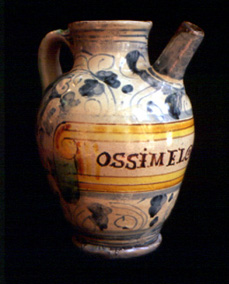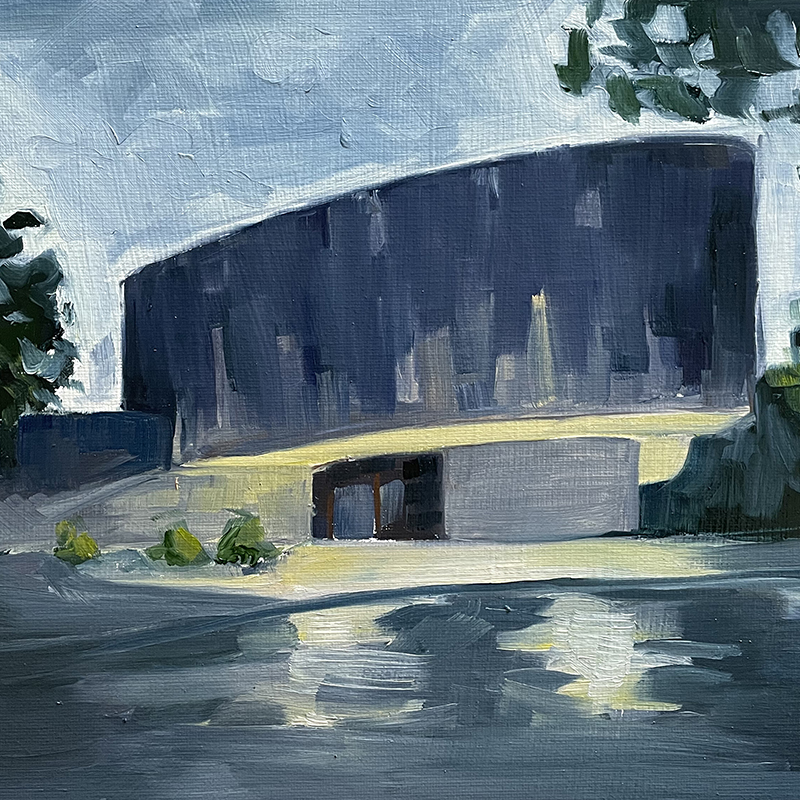16th & 18th Century Italian Majolica

Italian Wine Jug, ceramic,
18th century, 7 3/4 inches high,
Donated by Robert Lekman
Decorative Tin Glazed Earthenware
The Majolica Collection comprises 28 pieces of Italian earthenware from the 16th-18th centuries, donated by Robert Lekman. Majolica is a term applied to Italian pottery originating in the 14th century, though its origins remain unclear. Persian pottery may have been imported to Majorca and then sold to Italy as a Majorcan product.
Majolica is distinguished by its use of tin, a lead glaze to which tin ashes have been added, creating a white, opaque glaze that accepts a variety of blues, greens, yellows, oranges, and manganese purples applied to the white background. Many of the decorative motifs are reminiscent of other hand painted objects of the period, such as architectural embellishments. Throughout the 15th century, the green, purple, blue and white luster wares of Valencia, Spain were extremely popular in Italy and influenced three major centers for majolica; Tuscany, Faenza, and Deruta, of which the MMAC collection includes examples.
The Majolica Collection comprises 28 pieces of Italian earthenware from the 16th-18th centuries, donated by Robert Lekman. Majolica is a term applied to Italian pottery originating in the 14th century, though its origins remain unclear. Persian pottery may have been imported to Majorca and then sold to Italy as a Majorcan product.
Majolica is distinguished by its use of tin, a lead glaze to which tin ashes have been added, creating a white, opaque glaze that accepts a variety of blues, greens, yellows, oranges, and manganese purples applied to the white background. Many of the decorative motifs are reminiscent of other hand painted objects of the period, such as architectural embellishments. Throughout the 15th century, the green, purple, blue and white luster wares of Valencia, Spain were extremely popular in Italy and influenced three major centers for majolica; Tuscany, Faenza, and Deruta, of which the MMAC collection includes examples.
